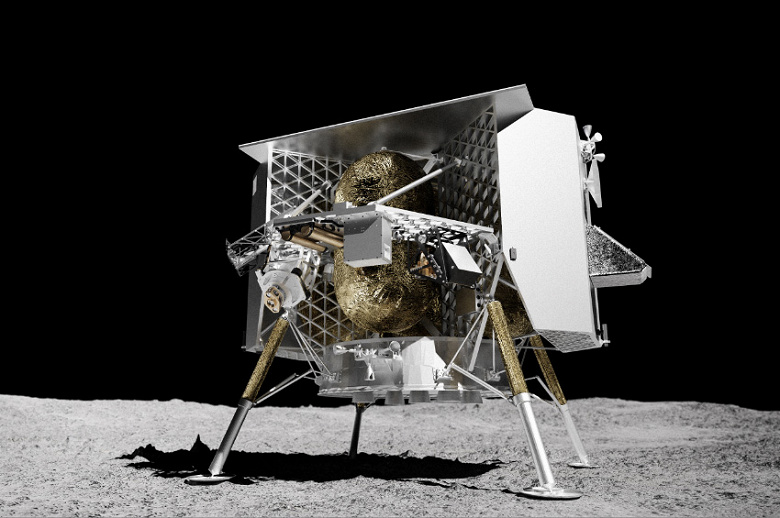On Christmas Eve, the Peregrine lander will be sent to the moon with tools useful for future manned missions
On the night of December 24-25, 7 countries will send a «Christmas gift» to the moon. As part of this «gift» there will be scientific instruments, as well as some unusual loads.
This mission will launch the Peregrine Lunar Lander spacecraft, named after the fastest flying bird on Earth. With a successful development of events, this robotic «feathered» will end up in a region of the Moon's ancient lava flows known as Sinus Viscositatis.
The mission will be the first launched under the Commercial Lunar Payload Services (CLPS) program, designed to deliver cargo to the Moon without the need to build a spacecraft solely for that purpose. In this case, Astrobiotic is responsible for the Peregrine Lunar Lander, and NASA is paying for the payload. The Peregrine Lunar Lander will be launched on the maiden flight of the Vulcan Centaur rocket — successor to United Launch Alliance's Atlas V, Delta IV and Vulcan Centaur rockets. In the same launch, 5 scientific instruments will be sent to the Moon.
The first is called the Peregrine Ion Trap Mass Spectrometer, or PITMS. The instrument will be used to study the lunar exosphere using mass spectrometry — a thin shell of gas around the Moon. It will measure the mass-charge ratio of ions such as hydrogen atoms, wave packet ions and other charged particles to provide information about the composition and behavior of volatiles on the Moon. The main benefit of this tool is to expand knowledge about the content and behavior of volatiles on the Moon and their response to disturbances, such as emissions from rocket engines. This will improve our understanding of the lunar environment and develop measures to protect future lunar missions from exposure to volatiles.
In addition, Peregrine will deliver the NSS Neutron Spectrometry System. It will help determine the hydrogen content in the thin atmosphere of the Moon and the hydration levels of the regolith. The data obtained from NSS will help expand our understanding of the geological processes on the Moon and its evolution. Measuring the volume of hydrogen in particular will help determine moisture distribution and discover ice resources. Neutron spectrometry can also help in studying the background radiation on the Moon and its impact on people and technical systems. Data from NSS will be useful for developing safety measures and protection against the effects of background radiation on the Moon.
Peregrine will also carry the Neutron Reflector Array LRA to the Moon, which is a device consisting of eight retroreflectors that are used as precise optical location markers on the Moon. The LRA will serve as a permanent location marker on the Moon for decades to come, providing accurate navigation and orientation for future lunar missions and exploration.
The latter two instruments include the NIRVSS and LETS spectrometers. NIRVSS — This is a set of sensors that will measure how light in different channels passes through the lunar atmosphere and interacts with its surface. NIRVSS will help understand how various substances spread across the lunar surface, including volatiles produced by the lander, and will also help understand how surface temperatures affect these substances.
Another LETS spectrometer will help gain a more complete understanding of the resource reserves on the Moon and their chemical composition. This will help expand understanding of the chemical processes and interactions of substances on the surface of the Moon. The data obtained will be useful for research and use of the resources of our natural satellite.
Also announced as a payload is the Lunar Dream lunar capsule, created by the Japanese company Astroscale, which contains messages from more than 80,000 children from around the world. The American company Elysium Space will send the remains of deceased people to create monuments on the Moon in the future. And scientists from the Seychelles will send one bitcoin.
«We will bring seven nations to the surface of the Moon, of which six have not previously had the opportunity to participate in lunar programs, including: Great Britain, Mexico, Germany, Hungary, Japan and the Seychelles» , — reported by Astrobiotic CEO John Thornton.
The launch window is provided within two days from December 24th. If it happens, Peregrine and its scientific instruments will land on the Moon on January 25 next year.

